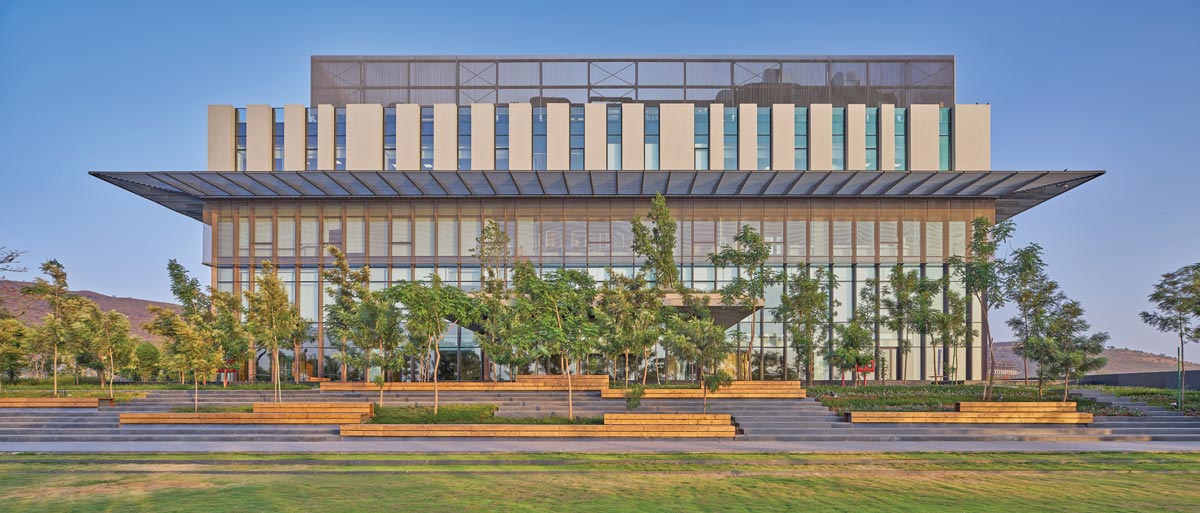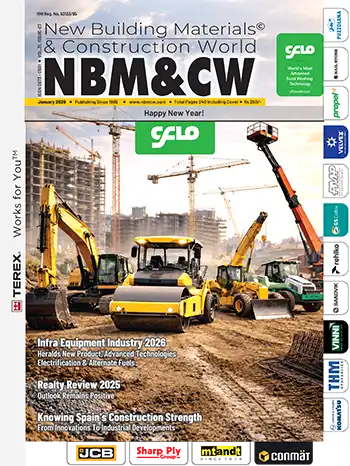
Globalization has opened up the boundaries politically, economically and culturally; bearing its influence on every field across the globe. It has given rise to new forms and styles of architecture that are homogenizing cities and landscapes. However, the glamour of this “unified international style” has resulted in the loss of cultural identity of a place. This style focuses on elevating the city’s image in the global market, rather than evoking a sense of belonging among the locals. There is a need for a new urbanism; one that harmoniously blends our traditional knowledge with modern architectural practices, without neglecting context.
3D Printing, virtual reality and BIM have made the margin of miscalculation minimal.
From computer-aided design to the advent of drones in surveying, mapping and increasing the overall efficiency of work, technology is continuously transforming the construction industry. Smart cities powered by new technologies are altering the way we perceive our cities. 3D Printing, virtual reality and the widespread use of BIM have made the margin of miscalculation minimal. From concept to completion, technology has over time transformed every stage of the design and construction process. Incorporating BIM early on in the design-development stage allows mapping of all the diverse layers of an architectural drawing, including structure and services facilitating better planning.
VA’s recent projects like Wipro Kodathi, Lupin and BASF have been modeled using BIM. The projects display a high level of geometric accuracy and intelligent analysis right from the start of the project conceptualisation. The quantification provided by BIM eliminates the need for assumptions. The firm also makes use of several other cutting-edge design tools including Navisworks, Autodesk Civil 3D, apart from Revit.
 Lupin R&D Centre, Pune
Lupin R&D Centre, PuneThe new trend in the building industry is leaning towards reviving vernacular building materials in modern form.
Architects have a challenging responsibility to design buildings that respond to emerging global concern regarding the use of energy and resources. The new trend in the building industry is leaning towards reviving vernacular building materials in modern form while harmoniously blending them with composite materials. Architects now understand the significance of sourcing relevant materials found within a certain radius distance to be vernacular and hence truly sustainable. This outlook coupled with sustainable construction processes weave in sustainability at the early onset of a project.
One of VA’s award-winning projects, Lupin R&D centre uses materials that are locally available, eco-friendly and ensures that nature is preserved and unharmed. High energy- efficient glass is used to maximize daylight and minimize heat gain. In addition to this, the design maximizes on the locally-available natural stone with low embodied energy and recycled high pressure laminate as cladding material.
There is a huge opportunity for prefab construction industry right now in the country.
India’s construction industry is suffering from a shortage of skilled labour, increasing prices of raw materials and wastage. Developers can derive cost benefits from offsite construction technologies, through timely completion of their projects. Today’s environmental challenges have brought sustainability to the forefront of our design practices. PEB structures with their high proportion of recycled content have proven to be environment-friendly and energy-efficient. PEBs can also prove to be a good bet for affordable housing owing to their speed of construction and low cost, thus helping in rural development projects in India.
Studies show that architects tend to under-invest in technology, despite the benefits.
One of the major challenges faced by the construction industry is its nonchalant attitude towards adopting new technologies. Several studies have shown that architects tend to under-invest in technology, despite the benefits. Emerging technologies like BIM, VR, AR, robots, drones, 3D printing etc. are all transforming trends in the construction industry. We are quickly reaching the point where technology is going to be a critical component of all construction projects. It is necessary that all stakeholders of the industry start getting technologically-efficient to survive in this rapidly-changing environment.















